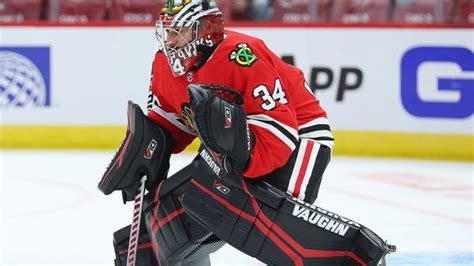Petr Mrazek: Tissue-Specific Training - Phase I
Building the Architectural Base of Connective Tissue
The adductors have become the new hamstrings!
Based on our recent articles on athletes with groin (more specifically adductor) injuries and our most recent video discussing Petr Mrazek and his training program and subsequent injury, much discussion has occurred about current adductor training/rehabilitation exercises, models and protocols.
As with all things related to training nothing can be taken in isolation, however the Copenhagen exercise seems to be all the rage, much like the Nordic exercise was (is) all the rage for the hamstring group. So much so, that this is often the first entry point for many involved in tissue rehabilitation or at the very least it is the attempt of the practitioner to get to these “exercises” as quickly as possible because of the surrounding mystique of what they may provide.
As with all issues of complex systems an input must be scaled appropriately to the current need of the system otherwise the change in behaviour that is being driven will not occur. As such, specific exercises must be dosed appropriately and at the right time to achieve the desired effect.
It is still very surprising to see published standard protocols neglect the foundational role that connective tissue plays in muscle behaviour. In fact, there are no training stimuli that specifically address this tissue and the intent of improving its architectural properties (which has huge downhill effects for muscle behaviour) or its subsequent tissue specific strain behaviours. It is an anatomical reality that connective tissue is the environment within which muscle tissue lives and functions. From there the two different tissues have a mutually beneficial relationship that creates a necessary feedback to current and future behavioural outcomes, specifically the production and transmission of force. It would be logical to think about this as a symbiotic relationship. Symbiosis is loosely defined as a relationship whereby two independent things interact and in this case are physically attached to create a whole that produces behaviour that it would not be otherwise capable of producing. Like any ecosystem, if this conjunctive symbiotic relationship breaks down it has large trickle down effects within the ecosystem.
At Absolute we wanted to share an example of the training stimuli that we would use to begin the process of connective tissue organization. As you can see in the template below, there are three major training variables that we are manipulating at this time: a) the length of the tissue, b) the amount of load into the tissue at length, and c) time.
In addition, we have training inputs that are joint specific to create the flow of afferent and efferent information from the CNS to the periphery, keeping this important feedback loop as a necessary training stimulus which will add to the tissue specific work over time.





Yes, there is benefit to starting with input 2 before ME PAILs/RAILs. Recall, if you are doing PAILs contraction, you are at tissue length and are thus stimulating connective tissue architecture changes - i.e. changes in the length-tension curve. Obviously, there will be information flow that will be generated from that work as well, and that should, in theory, make the ME PAILs/RAILs "better" as the athlete should have more awareness of how to drive force into the tissue you want to train.
Thanks so much guys for this!
Why is hip capsule PAILs after the Hip ABD PAILs?